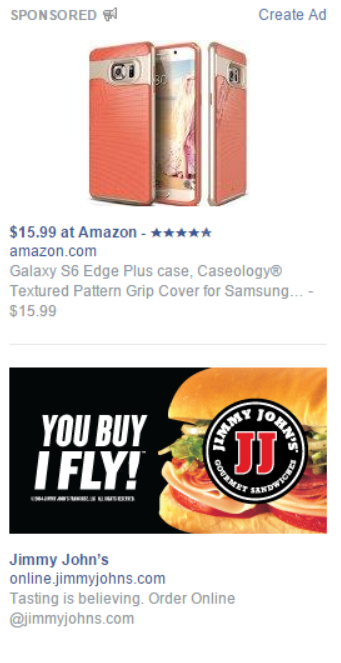Halloween is just right around the corner, and it’s high time that us marketers confront our own fears concerning what some are calling “creepy marketing.” It’s the newish marketing technique in which online advertising is targeted to consumers based on their previous Internet actions, in situations where these actions did not result in a sale or conversion. This of course is called retargeting or behavioral marketing.
But is it creepy?
First let’s dive into how it works exactly.
“Retargeting is a cookie-based technology that uses simple a Javascript code to anonymously ‘follow’ your audience all over the Web.”
So say you decide that you want to purchase a new vacuum cleaner. You begin your search on Amazon, spending a few minutes or an hour looking at all the different reviews, prices, and brands. After deciding to come back to it another time, you move on to checking your latest Facebook feed. Only to find an ad for a vacuum cleaner right smack dab in the middle of your feed. Creepy? And how did that happen?
- The advertiser adds a third party cookie to your browser in order to identify you as the user interested in a new vacuum cleaner.
- The data stored by this cookie typically includes the pages of the e-commerce website you visited, the time of your visit, your geo location at a city level. This data is typically referred to as non-PII or non-personally identifiable information, because that’s exactly what it is.
- When you visit a website like say Time.com to read news, and if Time.com belongs to the advertiser’s publisher network, the advertiser identifies you from the cookie on your browser and shows you a dynamic retargeting ad based on the products you’re interested in.
- The ads are optimized in order to attract your attention and to entice you into a purchase – the basic premise of all marketing.
Let’s switch that around a bit. Say you go to a restaurant and are greeted by a hostess with a nice welcoming smile. She sits your party at your favorite table and proceeds to bring you a white sangria – again your favorite. Next, the waiter informs you that your favorite meal is on special just for this evening. Again, I ask is this creepy or just stellar service on the restaurant’s part?
I believe that most people regard retargeted ads “creepy” simply because they are unaware of the technology behind it.
The Genius Behind the Curtain
- The cookies on your browser have a maximum shelf life of 30 days. Also, considering the rigorous data science behind retargeting products, there’s a high chance you’ll not see retargeting ads for more than a week or two based on metrics like the average conversion period for the advertiser or the industry. As an example, 90 percent of retargeting conversions for baby products happen within 5 days. For hotels, the number is 9 days.
- Isn’t seeing an ad that you are interested in, far better than some completely random ad? Take the ads that I saw today on Facebook. Both are relevant to my browsing history. I recently purchased a new Samsung Galaxy S6 Edge and was looking on Amazon for that very case pictured (it should be noted that I did not purchase the case). I also recently ordered from Jimmy Johns. Aren’t these ads better for me as a potential consumer?
- They can be useful. Retargeting ads increasingly use real time data to build ads. As an example, if you’ve been on the lookout for cheap flight for the upcoming holidays, retargeting ads can often alert you about a sudden sale or fall in price.
Even though retargeting marketing is still a relatively new tool for advertisers, there is in fact more research that needs to be done. For instance, understanding users’ click behavior, using average conversion periods, and of course marking converted users out of the campaign are only a few. Is it a creepy marketing ploy though? No – I believe wholeheartedly that it is a new genius marketing technology that we should all learn and use in the years going forward.
What are your thoughts? We would love to know!




